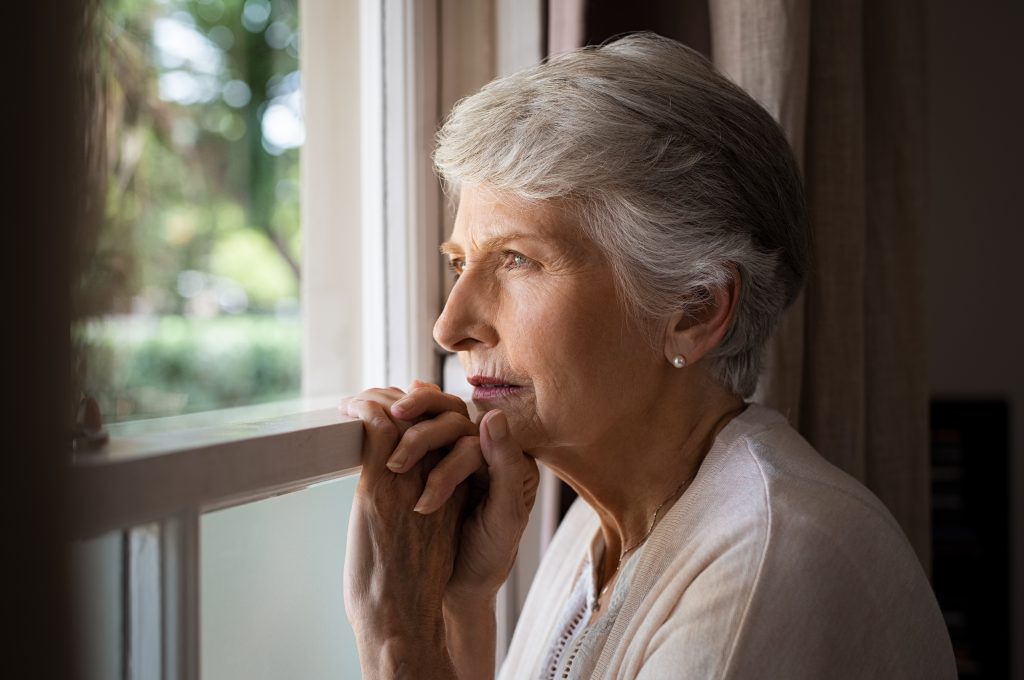October is the month we recognize National Mental Illness Awareness Week, World Mental Health Day and National Depression Screening Day.
Of course, the impact of mental illness far transcends a single week or day, and such a brief amount of time isn’t enough to fully explore all of the psychological, sociological, and scientific complexities of the human mind and its ailments.
Unfortunately, the throes of depression last much longer than these brief observances. When struggling with depression, you don’t get a holiday off, and it takes more than a single week to recover. Still, it’s a good time to raise awareness and (re)educate yourself on this serious public health issue, especially as it regards yourself or your senior loved ones.
Geriatric depression
Depression is often described as the “common cold of mental illnesses.” That’s not to diminish the severity of it at all; but rather, illustrate its prevalence. Of course, many of us know all too well the true devastation of depression—in the individuals it affects, as well as the rippling collateral damage.
Sadly, seniors are not immune; however, they can be easily overlooked when it comes to this illness. Some of depression’s symptoms mimic common effects of aging, such as decreased energy, lethargy, and difficulty concentrating and making decisions.
At least seven million Americans aged 65 and older suffer from clinical depression. Sadly, only ten percent of these individuals ever receive treatment for it.
As most people know, depression is a major culprit behind suicide. According to Web MD, “the suicide rate for peoples ages 80 to 84 is more than twice that of the general population.”
But depression doesn’t need to play a part in getting older. Life is never perfect, but it’s entirely possible to live a fulfilling existence filled with moments of peace, love, and even joy. No matter what, there is always hope. While it can morph into different forms, it remains one of the most powerful forces on the planet. But depression can pull hope out from under you like a rug.
If you are age 65 or older—or have a loved one who is—it’s important to understand the risk factors, signs, and symptoms of geriatric depression.
Risk factors for geriatric depression
• Gender: Females are more susceptible to clinical depression
• Significant life events (either positive or negative), such as moving into an assisted living home, losing various levels of independence, the loss of a loved one, or retirement
• Biological family history of depression
• Personal history of depression
• Side effects of medications
• Chronic pain (and related health conditions)
• Adverse health conditions, such as heart disease

The mind is an organ in the body, and everything in the body is ultimately connected. So it makes sense that physical and mental ailments are linked. Physical and mental conditions can counteract each other, exacerbating one or the other, and vice versa.
Signs of senior depression
Oftentimes geriatric depression surfaces through physical aches, pains, and lethargy. Many seniors may not express emotional sadness, but instead complain about related physical symptoms ailing them. Additionally, older generations struggle with more of a stigma tied to psychiatric issues than younger generations.
However, many of the same symptoms of geriatric depression align with the general depression symptoms faced by people of all ages.
Here are some potential warning signs and symptoms:
• Fatigue
• Lethargy
• Irritability
• Frequent crying spells
• Weight gain or weight loss (not on purpose)
• Difficulty concentrating
• Mood swings
• Loss of enjoyment of former hobbies
• Low self-esteem
Tactics to help alleviate senior depression
Psychotherapy (talk therapy) — Psychology Today is a great resource for finding a counselor in your area who accepts your health insurance and specializes in your presenting concerns and issues.
Art therapy — This can allow clients to explore their feelings in ways that transcend speech or the written word, and can include painting, collaging, beading, or drawing (ink or pencil).
Sandtray therapy — This is another modality of therapy that goes beyond words and verbal communication. Learn more about it here.
Social interaction and/or day trips — Sometimes it can help people “get out of their heads” a little bit if they can distract themselves and experience a new environment. Some ideas include: visit to an art museum, movie theatre, local mall, library, park, or any place that may interest your senior loved one.
Concerned about yourself or a loved one? There are many free resources and screenings for depression online, but make sure to speak with a physician—whether your primary care provider or a psychiatrist.
If you found an error, highlight it and press Shift + Enter or click here to inform us.


